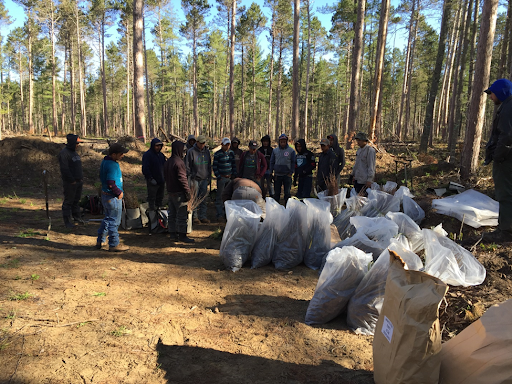Transition
actively facilitate change to encourage adaptive responses
Management Goals
- Reduce red pine dominance to 20 – 50%
- Increase future-adapted species
- Productivity and disturbance occur within slightly wider acceptable ranges
- Increase heterogeneity and structural complexity

Strategies & approaches
- Site preparation in gaps with harrow disk
- Irregular shelterwood (20% in gaps, thin matrix to 70 ft2/acre)
- Increase future-adapted species in gaps and matrix, including native and new species (eastern white pine, red oak, bur oak, white oak, red maple, bitternut hickory, black cherry, and ponderosa pine)
Site Leads & Partners
Brian Palik (USDA Forest Service, Northern Research Station) is the site lead for the Cutfoot Experimental Forest ASCC project site. Site level coordination is supported by Doug Kastendick (USDA Forest Service, Northern Research Station). Key partners include the Leech Lake Band of Ojibwe, the Chippewa National Forest, Linda Nagel (Utah State University), Tony D’Amato (University of Vermont), Peter Clark (University of Vermont), Miranda Curzon (Iowa State University), and Rebecca Montgomery, Jamie Mosel, Josh Kragthorpe (University of Minnesota), .Toni Lynn Morelli (USGS), Alexej Siren (University of New Hampshire)

Brian Palik
Site Lead
Research Ecologist Northern Research Station, USDA Forest Service Forestry Sciences Laboratory 1831 Hwy. 169. E. Grand Rapids, MN 55744 Phone: 218-326-7116 [email protected]
